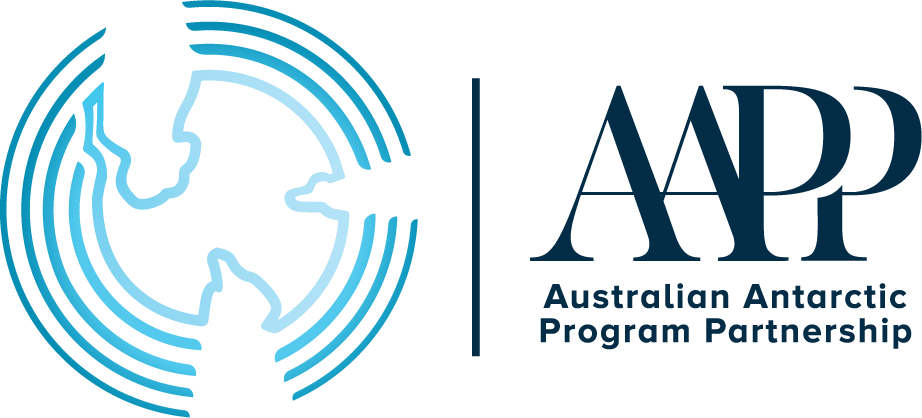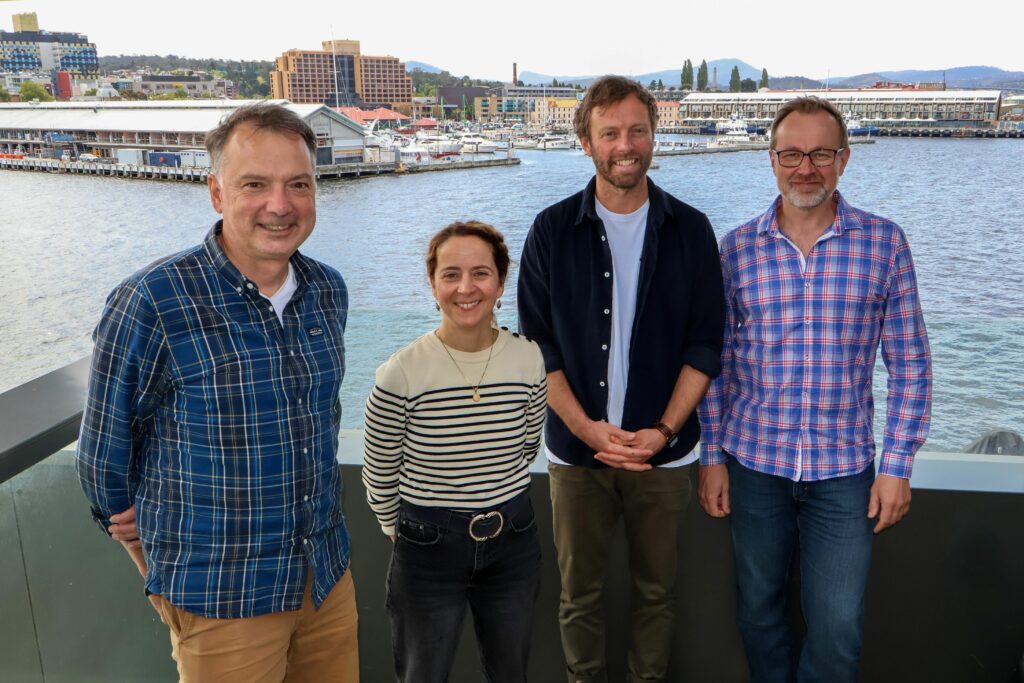Under the pump: robot floats probe carbon pathways in the Southern Ocean
26 July 2024
The world’s first open-ocean study to combine observations from robotic floats and sediment traps has tracked nearly a million tonnes of carbon flowing from the surface to the deep of the Southern Ocean each year.
The research centred around the Southern Ocean Time Series (SOTS) site over a 12-year period, a deepwater mooring southwest of Tasmania and part of Australia’s Integrated Marine Observing System (IMOS) since 1997.
Xiang Yang, PhD student with the Australian Antarctic Program Partnership at the University of Tasmania, said that the Sub-Antarctic Zone where the SOTS site is located is globally significant for the exchange of carbon dioxide (CO2) between the ocean and atmosphere.
“Roughly between 46° and 60° S, the Sub-Antarctic Zone is important for global climate because waters from the surface layers slide under warmer waters and carry CO2 and heat into the deep ocean, away from the atmosphere.”
“There are several different pathways for carbon to be absorbed from the atmosphere and stored in the deep ocean.”
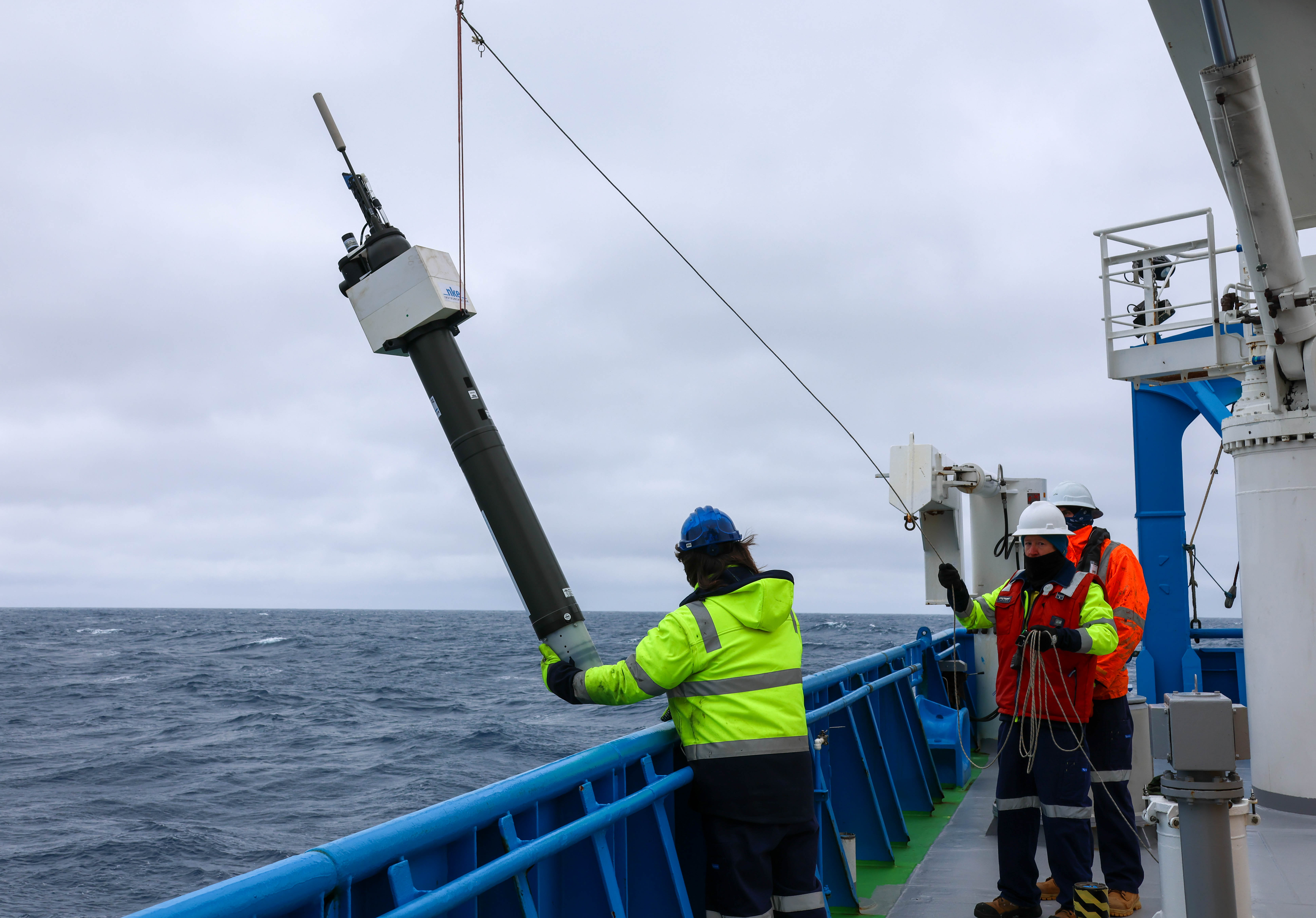
“This study investigated the relative and cumulative contributions of three of these ‘carbon pumps’ in the Australian sector of the Sub-Antarctic Zone,” he said.
The Biological Gravitational Pump (BGP in Fig.2) sinks larger carbon particles like dead plankton and faeces under gravity. It is the most powerful mechanism for transporting organic carbon to depth, with most exports during spring and summer.
The Mixed Layer Pump (MLP) is a critical export pathway for carbon particles that are smaller and sink slowly, mostly in autumn and winter, isolating carbon from the atmosphere in deeper layers.
The Eddy Subduction Pump (ESP) ‘injects’ particulate organic carbon down to several hundred metres through swirling currents that are localised and episodic, transporting small and large particles throughout the year.
Mr Yang said this study estimated carbon export via these three pumps using observations from robotic BGC-Argo floats. BGC (for biogeochemistry) Argo floats autonomously collect data along deep-sea profiles down to 2000 metres, typically every 10 days.
“Using BGC-Argo floats with a combination of bio-optical and oxygen sensors provides new ways to gain a more complete understanding of the ocean carbon budget,” he said.
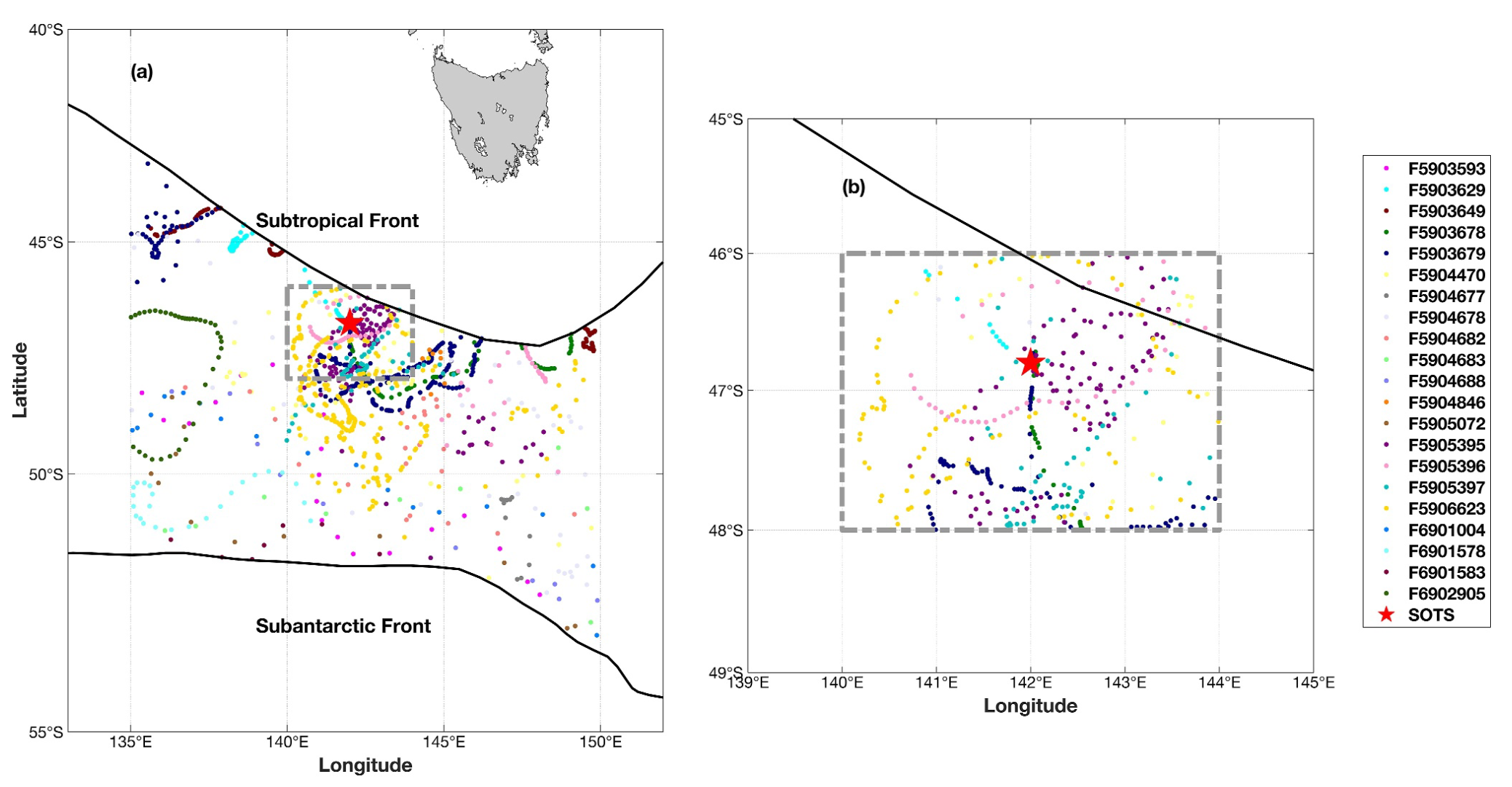
Around the SOTS mooring that carries the sediment traps, 399 profiles from 9 floats mapped the seasonality of the three carbon export pathways.
This analysis was then expanded to the Australian sector of the Sub-Antarctic Zone with a total of 1264 profiles from 21 floats.
The results show the SOTS site represents the bordering region very well, in terms of organic carbon export from the surface ocean, consumption in the mid-ocean and sequestration in the deep ocean.
“For the first time, we directly compared float-based estimates to the amounts of particles measured by sediment traps at 1000 metres in the Australian sector of the Sub-Antarctic zone, to better understand the contributions and variability of these export mechanisms.”
The fraction of organic matter that remains after being consumed as it travels between the surface layers and depth is defined as the ‘transfer efficiency’.
Mr Yang said he and his co-authors estimate that 3.6% of particulate organic carbon ends up being stored in the deep ocean, avoiding release to the atmosphere as inorganic carbon.
“Based on this transfer efficiency of 3.6%, we calculate about 940,000 tonnes of carbon is sequestered per year in the Australia Sub-Antarctic Zone sector. The carbon delivered below 1000 metres could be stored for more than 400 years.”
The Southern Ocean (south of 30°S) is responsible for about 40% of the total global ocean uptake of human-induced CO2 emissions, and 75% of the additional heat that these emissions have trapped on Earth.
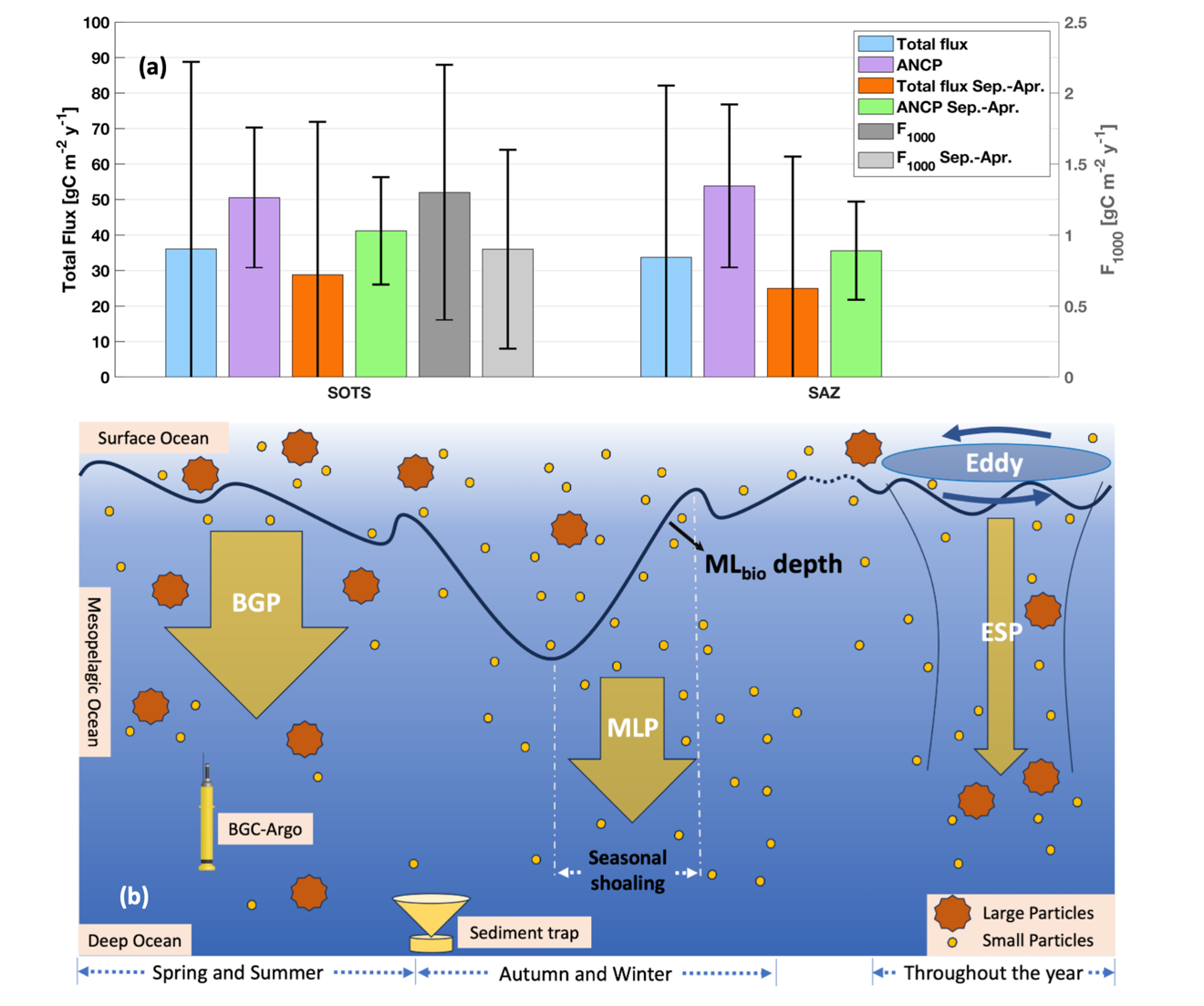
READ THE PAPER: Yang, X., Wynn-Edwards, C.A., Strutton, P.G., and Shadwick, E.H. (2024) Carbon export in the subantarctic zone revealed by multi-year observations from biogeochemical-Argo floats and sediment traps. Global Biogeochemical Cycles
The IMOS SOTS site is operated through a partnership between IMOS, CSIRO Marine National Facility, CSIRO, Bureau of Meteorology, and the Australian Antarctic Program Partnership (AAPP). IMOS and the CSIRO Marine National Facility are national research infrastructure supported by the Australian Government’s National Collaborative Research Infrastructure Strategy (NCRIS).
